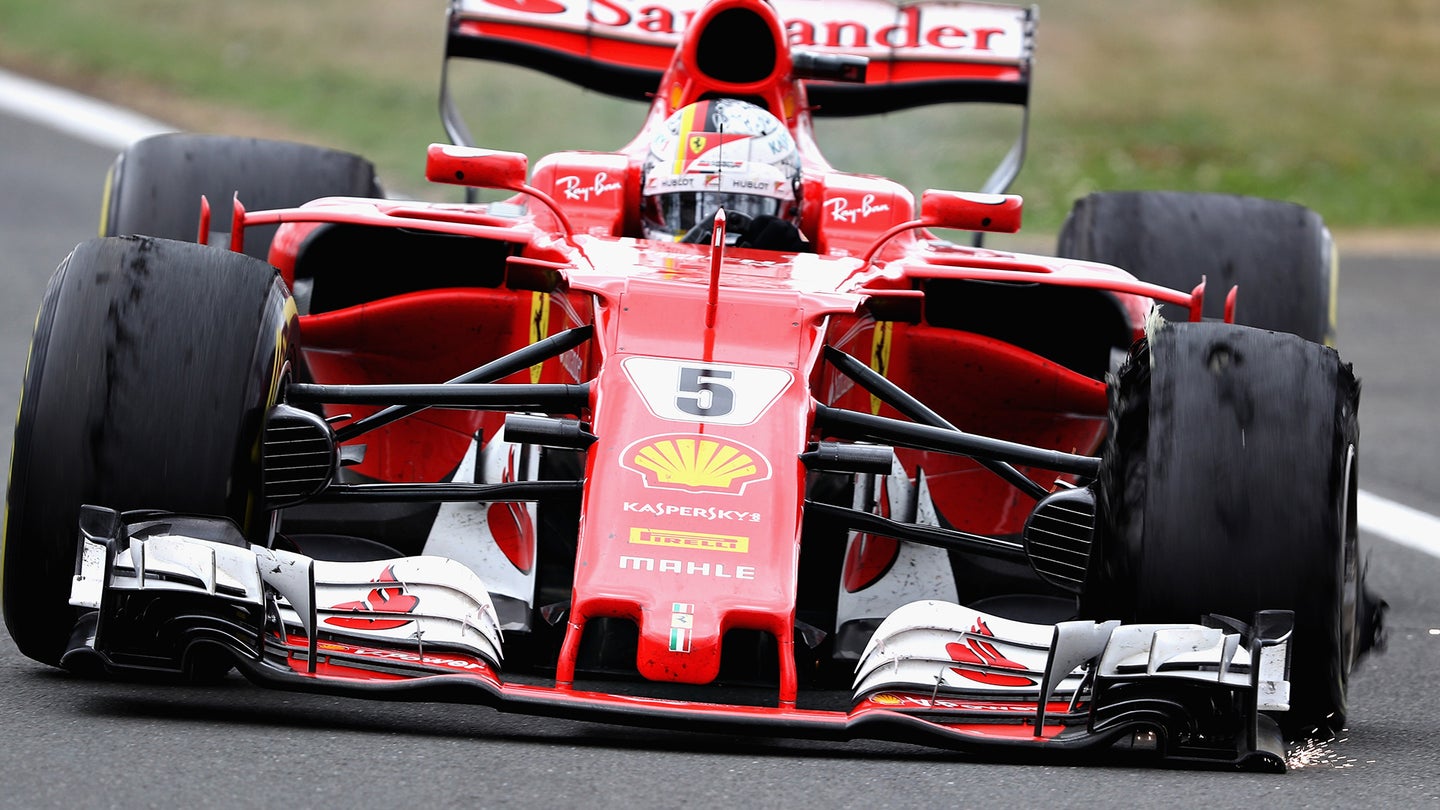Pirelli Confirms Slow Puncture Was Cause of Vettel’s British Grand Prix Tire Failure
The cause of Kimi Räikkönen’s tire failure, however, remains a mystery.

In the closing laps of the Formula One British Grand Prix, both Ferraris suffered left-front tire failures, both while on the soft compound rubber. The failures happened just laps apart and seemed to occur at around the same part of the track. Ferrari seemed on pace for Kimi Räikkönen to finish second and Sebastian Vettel to come home in fourth. After both drivers were forced to stop for new tires, they ended up third and seventh, respectively.
Pirelli has now concluded that Vettel's tire failed due to a slow puncture. In a press release, Pirelli stated: "As appeared clear since Sunday afternoon, a full investigation has now confirmed that the original cause of the failure was a slow puncture. The consequent driving back to the pits on an underinflated and then flat tyre led to the final failure."
To the viewer, there was a notable difference in what happened to each car: Vettel's tire lost pressure, eventually going flat and getting torn up as he drove back to the pits; Räikkönen's tire started to come apart, but remained inflated. What is noticeably absent from Pirelli's full statement is what caused the puncture.
Vettel had been quite literally driving the tires off his car. They were, to use a technical term, toast. His tires were blistered, chunks of rubber being ripped from them through each corner. If the slow puncture wasn't directly caused by the blisters opening a hole in the tire, they most certainly contributed to it. Even on their first laps, racing tires are easily punctured by debris, like bits of carbon fiber, that wind up on the track during the course of a race. The condition of Vettel's tires made them even more susceptible to a puncture from debris.
That brings us to Räikkönen's tire failure. His tires were also in horrible condition. As the blisters opened up, his front left started to delaminate. As he made his way around the track and into the pits, the tire retained air, as it was not punctured. Even though the tire was, for the most part, intact, Pirreli hasn't been able to determine exactly what happened.
"Kimi Raikkonen's damaged tyre shows less evidence of what occurred, so further tests and analysis are still ongoing in Pirelli’s laboratories and indoor testing facilities. It will take a few more days to reach a definitive conclusion" said Pirelli in via its press release.
Ultimately, both cars were hampered with tire failures that were related, directly or indirectly, to excessive blistering. That blistering is a result of several factors like the set-up of the car, tire pressure, track temperature, how long the tires had been on the car, and how hard the driver had been pushing. No one element or actor alone is to blame. Not Ferrari, not Pirelli, and not the driver. Ferrari was racing hard, pushing everything (as the drivers love to say) to the maximum. The stars aligned against them this time, with enough factors coming into play that the tires were pushed beyond their limits.
That's racing.
